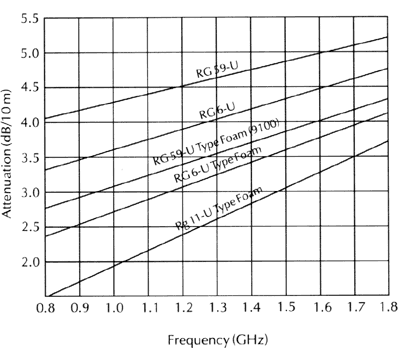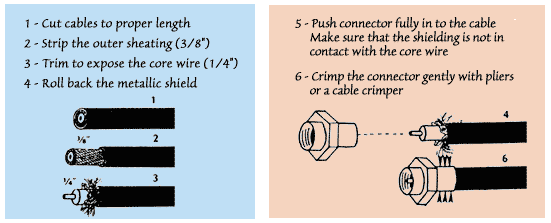Coaxial Cable
When installing a satellite system, consider your coaxial cable like a pair or electrical wire: if the connection is not "clean", the system will not work and you may damage one or more components of the system.
When you set up your cable:
- The satellite receiver should always be the last thing to be connected.
- Unplug the receiver when you connect the coaxial cable.
- If the satellite receiver is plugged, when you connect the LNBF, you may damage the receiver and the LNB.
Grade of cable
Depending on the installation, you may have to use different grades of cable:
- For residential installation, use RG6-U cable with an FT-4 fire rating.
You may run up to 175' of RG6-U cable without in-line amplifiers. If you must use existing RG59 lines, do not use more than 50' of RG59 for 60' of RG6-U.
- For commercial installation, RG6-U coaxial cable with an FT-6 fire rating may be required. FT-6 cable is expensive, but failing to use FT-6 cable in an office, violates fire safety regulations.
- If you have a very long cable run, you may need in-line amplifiers. In-line amplifiers, however, may not provide the bi-directional communications required between the LNBF and the receiver by modern satellite television systems.
- If you need to run a very long cable run (up to 300ft) without using in-line amplifiers, you may have to use RG-11 coaxial cable.
The following table illustrates the loss experienced on different grades of cable:

- A typical LNBFs will have a gain of 55dB.
- Standard systems operate in the 0.95 to 1.45 GHz range
- Dish Pro equipment goes up to 2 GHz
Connections
If your connections are not perfect, you may damage your system and you will never find a signal…
To make a proper connection, please study the diagram below very carefully.

If you intend to do more than one installation, consider buying a cable stripper and a cable plier for RG6-U cable & RG-56 F-Connectors. These items are available at your local home depot for around $80.


